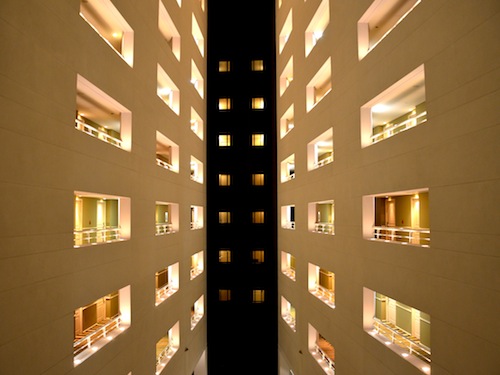RALEIGH, N.C., (April 5, 2013) – FMI, the largest provider of management consulting and investment banking services* to the engineering and construction industry released today its Q1-2013 Construction Outlook. Although the strength of individual markets is shifting, the forecast for total construction-put-in-place for 2013 continues to show an increase of 8% over 2012 levels. The $918,897 million estimate is a solid improvement, but FMI does not expect to return to the days of annual construction above the trillion-dollar mark until 2015.
The star of the show is residential buildings with a 23% rise in single-family buildings. While much of business sector is still in wait-and-see mode, some industries are breaking the mold and planning for growth. Commercial, lodging and office construction are starting to pick up.
The rich shale regions of the country are seeing a lot of construction activity. With oil and gas exploration booming, these regions are in need of housing, as well as the construction of roads, rail and pipelines to move the product from the fields to refining and distribution sites.
In addition, the potential for greater energy independence and lower energy prices is helping to make the U.S. more competitive in the global market and enticing more manufacturing to relocate in the U.S.
Residential Construction — Single-family housing put in place grew 19% in 2012, and FMI expects another 23% growth to reach $161 billion by the end of 2013. Multifamily construction improved a whopping 47% in 2012, with FMI looking for another 31% in 2013.
Nonresidential Construction Trends and Forecasts by Sector:
Lodging — After three years of steep declines, the market for lodging construction came back a strong 25% in 2012 and FMI expects another 10% growth in construction put in place for 2013.
Office — Office construction is finally showing a solid but slow turnaround with 5% growth in 2012 and another 5% increase expected in 2013.
Commercial — Commercial construction is the third largest nonresidential construction market behind education construction and manufacturing construction. That is why it is good to see that it continues into its third year of good growth, moving up 8% in 2012 and looking for another 7% to reach $50.3 billion in 2013.
Health care — Health care construction was moderate in 2012, growing only 3%, but FMI expects it to pick up in 2013 to 8% to $44.2 billion construction put in place for the year.
Manufacturing — Manufacturing construction increased 17% in 2012. It will continue with another 6% increase for 2013 through 2014.
Power-related — Construction for the power market grew 9% in 2012 and will continue to grow between 8% and 9% through 2017.
Related Stories
Multifamily Housing | Apr 12, 2024
Habitat starts leasing Cassidy on Canal, a new luxury rental high-rise in Chicago
New 33-story Class A rental tower, designed by SCB, will offer 343 rental units.
Student Housing | Apr 12, 2024
Construction begins on Auburn University’s new first-year residence hall
The new first-year residence hall along Auburn University's Haley Concourse.
K-12 Schools | Apr 11, 2024
Eric Dinges named CEO of PBK
Eric Dinges named CEO of PBK Architects, Houston.
Construction Costs | Apr 11, 2024
Construction materials prices increase 0.4% in March 2024
Construction input prices increased 0.4% in March compared to the previous month, according to an Associated Builders and Contractors analysis of the U.S. Bureau of Labor Statistics’ Producer Price Index data released today. Nonresidential construction input prices also increased 0.4% for the month.
Healthcare Facilities | Apr 11, 2024
The just cause in behavioral health design: Make it right
NAC Architecture shares strategies for approaching behavioral health design collaboratively and thoughtfully, rather than simply applying a set of blanket rules.
K-12 Schools | Apr 10, 2024
A San Antonio school will provide early childhood education to a traditionally under-resourced region
In San Antonio, Pre-K 4 SA, which provides preschool for 3- and 4-year-olds, and HOLT Group, which owns industrial and other companies, recently broke ground on an early childhood education: the South Education Center.
University Buildings | Apr 10, 2024
Columbia University to begin construction on New York City’s first all-electric academic research building
Columbia University will soon begin construction on New York City’s first all-electric academic research building. Designed by Kohn Pedersen Fox (KPF), the 80,700-sf building for the university’s Vagelos College of Physicians and Surgeons will provide eight floors of biomedical research and lab facilities as well as symposium and community engagement spaces.
K-12 Schools | Apr 10, 2024
Surprise, surprise: Students excel in modernized K-12 school buildings
Too many of the nation’s school districts are having to make it work with less-than-ideal educational facilities. But at what cost to student performance and staff satisfaction?
Industrial Facilities | Apr 9, 2024
Confessions of a cold storage architect
Designing energy-efficient cold storage facilities that keep food safe and look beautiful takes special knowledge.
Cultural Facilities | Apr 8, 2024
Multipurpose sports facility will be first completed building at Obama Presidential Center
When it opens in late 2025, the Home Court will be the first completed space on the Obama Presidential Center campus in Chicago. Located on the southwest corner of the 19.3-acre Obama Presidential Center in Jackson Park, the Home Court will be the largest gathering space on the campus. Renderings recently have been released of the 45,000-sf multipurpose sports facility and events space designed by Moody Nolan.

















